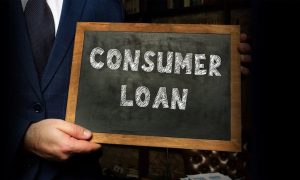Consumer financing provides access to goods or services they may not be able to afford outright, such as expensive products with long repayment terms. Loans of this nature can be costly and come with long repayment schedules. Businesses that offer financing options for consumers increase order value and foster brand loyalty while creating more flexible payment terms that enable them to serve more consumers.
1. Inflation
Have you noticed that your dollars don’t stretch as far? That could be an indicator of inflation, which occurs when costs increase faster than income. Economists tend to view inflation as beneficial; it means your money usually buys more today than it did previously. But too much inflation can have serious repercussions for consumers and businesses alike.
Consumers reliant on credit to finance their spending are particularly susceptible to inflation. While savings deposited in bank accounts typically yield only 4–6% annually, investing can generate twice that amount annually.
2. Bad Credit
Credit scores have an enormous effect on life in various ways, determining whether or not loans and credit cards are approved. Lower rates are offered on these products as a result of having strong scores. Bad credit often results in higher utility deposits and reduced choice when selecting a new home or rental apartment. Furthermore, poor credit can make maintaining positive relationships more challenging while impairing job prospects.
Consumer finance accounts are credit arrangements offered by financial institutions specifically targeting people with poor credit. They usually come with high interest rates to offset any risks involved when lending to these borrowers.
3. In-Store Financing
Consumer finance refers to any credit arrangement that helps consumers finance purchases. This may include loans, credit facilities, and layaway plans offered by retailers and third-party financial institutions.
These arrangements may have different payment terms and be classified as consumer finance accounts in credit scoring models, with potentially long-term effects that can negatively influence credit scores in various ways. Negative marks from such accounts could even remain on credit reports for several years after closing out an arrangement. In-store financing options provide shoppers with valuable opportunities to manage debt responsibly and purchase items that would otherwise be out of their price range, without depleting savings accounts or resorting to expensive credit cards.
4. Short-Term Loans
Consumer finance refers to any arrangement that allows individuals to borrow money from lenders on terms that meet their needs, including repayment terms and interest rates. It may include anything from short-term loans with flexible repayment periods and competitive interest rates up to long-term investments tailored specifically for specific consumers. These arrangements include buy now, pay later plans, revolving credit accounts, and consumer finance accounts. Since consumer finance companies take on greater risk, their interest rates may differ from those of traditional lenders.
Payday loans have long been part of American life, though state usury laws and restrictions helped limit their impact until the advent of neoliberal economic policy. Multiple regression models revealed a relationship between a history of short-term loan borrowing and higher systolic blood pressure, BMI, waist circumference, and CRP values, as well as increased self-reported physical and sexual symptoms.
5. Payment Options
Many consumers utilize various payment methods, including cash, debit cards, and credit cards. A wide range of payment options makes it easier for many consumers to stay within their budgets. Financial institutions provide consumer finance accounts, which are loans with high interest rates and set repayment terms, to individuals with less-than-ideal credit histories.
Merchants have discovered the value in offering consumer finance solutions at the point of sale as an essential strategy to attract customers and increase purchasing power, particularly among younger generations. When they see financing choices or promotions at stores, these young shoppers are much more likely to make purchases than otherwise.
6. Interest Rates
Interest rates affect every aspect of life, from savings earnings to loan payments and beyond. Central banks like the Federal Reserve set these market indicators and influence your purchasing power by setting interest rates accordingly.
When the Federal Reserve wants to stimulate the economy, they reduce interest rates—encouraging consumers to spend money and making loans more affordable—or when trying to control inflation by raising rates (inhibiting borrowing and slowing demand—keeping prices stable), raising them will decrease lending activity while discouraging borrowing, thus slowing demand and keeping prices stable. These decisions have widespread ramifications on everything from mortgages and auto loans to credit card payments and savings accounts.
7. Credit Utilization
Credit utilization is one of the major elements that contributes to your credit score. It measures how much debt you owe across all open revolving accounts, such as credit cards and home-equity lines of credit, divided by total available limits on those accounts.
Utilization ratios below 30% are ideal, and you can improve them by paying down balances or asking for an increase in credit limits. Maintaining low credit utilization levels can help you build an excellent payment history and qualify for new loans more easily, save on interest charges, and eliminate debt faster.
8. Payment History
No matter whether it’s for credit cards, loans, or mortgages, your payment history plays an essential role. Your payment history accounts for most of your credit score, and consistently making on-time payments shows lenders you are an honest borrower.
Consumer finance accounts are typically offered by financial institutions like credit unions or banks and feature high interest rates with specific repayment terms. Finding a budgeting system that fits you is the key to successfully reducing consumer debt. Strategies such as the debt snowball or debt avalanche methods can help accelerate debt reduction faster.
9. Inflation
Inflation refers to a general increase in prices of goods and services. This can reduce your purchasing power; you won’t be able to purchase as much with each dollar that was available previously.
Inflation occurs when supply and demand are out of sync, often as a result of the government printing too much money or events that drive production costs higher. While inflation affects all consumers equally, lower-income families typically suffer the greatest impact due to its effects.




